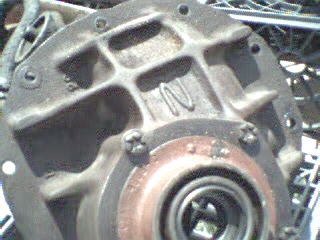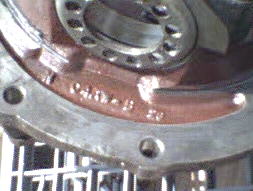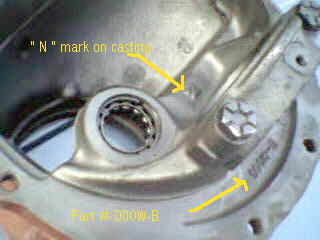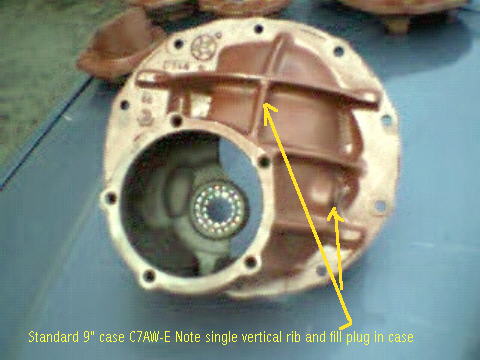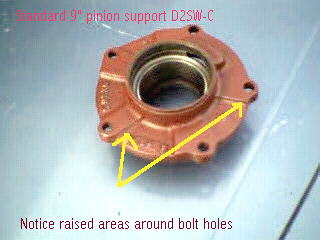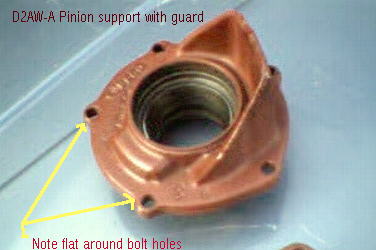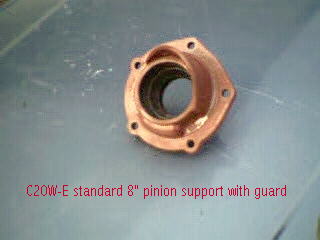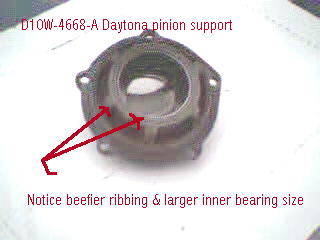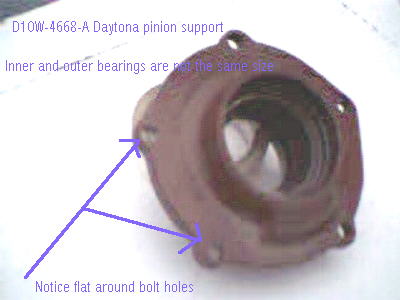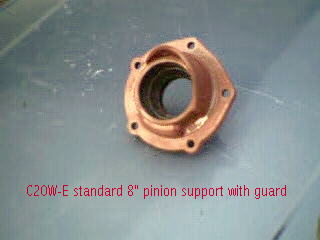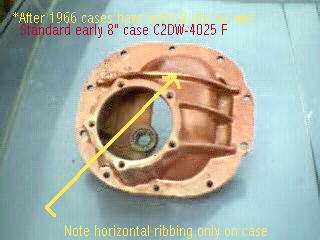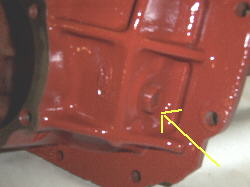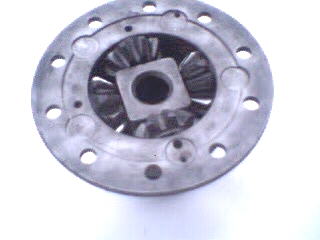Everything you wanted to know but was afraid to ask…
Ford used the 9 inch rear from around the 1957 model year right up until the early 1980’s in cars and trucks. It was not the only axle used, but was by far one of the best. Variations by Ford exist in the size of the outer axle bearings in the housings and carriers both, as well as with the spline count on the axle shafts. Generally most cars received the small axle bearings and 28 spline axle shafts. Exceptions to this were the ultra Hi performance Boss 302’s, Boss 429’s, 427’s, 428 CJ/SCJ and the 429 cars which received the 31 spline carriers and axle shafts. Some of the heavier cars like the Galaxies also received the larger wheel bearing housings.The trucks varied more, early half ton trucks got the 28 spline axles and carriers, while sometime in the early 70’s the switch was made to mostly 31 spline axles and carriers for most trucks. Most of the later trucks also received the larger axle bearings housings.One exception to this was the Bronco’s from 1966 to 1977, they stayed with the 28 spline units. A small bearing housing can be differentiated from a large bearing housing by the size of the nuts and thread used to retain the brake backing plates to the housing, the small bearing housings use 9/16 socket size nuts with 3/8” fine thread, while the larger bearing use 11/16” socket size and 7/16” fine thread. Gross Vehicle Weight ( GVW ) would determine which axle housing many cars and trucks received.
Because many one half ton trucks continued to utilize the 9 inch (both 2 wheel & 4 wheel drives) right up until about 1982 these housings are by far the most abundant(*Note:my recent findings are that the 9 inch axle was either utilized again in limited quantities in some 1985/6 truck/van applications or continued to be used up until that time by Ford in limited quantities*), and with many 1973 to 1979 pickups to still be found on the road and in junk yards,these are the most plentiful. And since the “Limited slip” or Locking rear end (often referred to as a “POSI”) came to be a popular option and more plentiful starting in the early 1970’s, many of the units found today at car swap meets and shows are the units pulled from trucks with the 31 spline carriers with the “Traction Loc” style posi unit. The actual car posi units which were primarily 28 spline carriers can be much more difficult to locate since the supply is limited to the few cars and early Broncos (and some early trucks) which received them-the 28 spline posi’s.When it comes down to actual shafts as well, since the truck lug pattern in most cases differed from the car, and due to the bearing size differences, 28 spline car axle shafts are much more abundant than car 31 spline axle shafts, and often aftermarket shafts have to be purchased if one wants to use a truck 31 spline carrier in a car 🙁
The carrier housing I see most is the C7AW-E, it is the one most commonly found in the trucks right up until around 1982. I am not sure if this “E” version of the case came into use in 1967 or in subsequent years, but it is by far the most abundant case being used in both full size Ford cars and trucks throughout the 1970’s. I have heard that it has a higher nodular iron content and better casting than the earlier single ribbed cases it replaced and that is why it remained in use so long, and the double ribbed N case was no longer needed for passenger car/truck applications (this also coincided with the demise of most performance engine options in the 70’s)- I have never seen this substantiated however. Most carriers I have seen for sale at swap meets/ car shows are this C7AW-E case which leads me to believe most were pulled from trucks and cars from the 1970’s.
Axle housings as noted in the examples below also evolved over the years, the earlier housings used in cars from 1957 to mid 1960’s tended to be the weakest and had abrupt ending but welded carrier centers to tubes and a smooth backside. Later housings appeared in either 1966 or 1967 with the familiar “Hump” in the backside middle and stronger tubes.The later truck housings received even beefier center carrier housings and tubes and this style of center carrier housing is best suited for drag cars or narrowed rear ends in my opinion due to the added strength in the middle. Most of the early housings are ok for the average street performance cars. The popular early swap being the 57 to 59 Ford for the 65/66 Mustang.I haven’t completed an axle housing width chart yet, but here is what I can tell you about some that I have seen, they often group Mustangs and Fairlane axle housings together as often it is true they are the same width, but I can tell you for a fact, the distance between spring perches is different between Mustangs and Fairlanes.Spring perches must be cut and re-welded inorder for the swap to be performed. The “rough “ widths I keep in mind for Mustangs are the following: 52” for 1965 to 1966 (the same width as 64-65 Falcons and 62 to 65 Fairlanes-as in the Mustang line, most however never received a factory 9 inch), 54” for 1967 to 1970 (same as 66 to 69 Fairlane,Torino,Comet & Cyclone non station wagons-cars with 351 and up engines received 9 inch units-as did some 302 4V cars with optional gear ratios) and 56” for the 1971 to 1973 Mustangs-cars with 351 engines and up receiving the 9” housings.Keep in mind as mentioned, the Fairlane spring perch distances were not the same as the Mustang. All the Galaxies I have seen from throughout the 1960’s used the 9 inch rear, regardless of engine size.
How to Identify some typical Ford 9 inch Centers

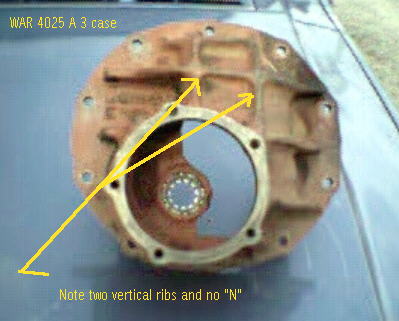
I have heard various stories as to the reliability of the WAR marked cases, some say avoid them like the plague, others say this is false.Here is what I understand, while having the extra ribbing like the N case, they do not have the nodular iron content and are prone to cracking at the bearing support.They seem to have been used on the 57 to 60 Fords from casting dates I have seen.
Another early case, the WAB was similar to the WAR case with the double rib and lower nodular content. I do not have a photo example at present.I believe this case utilized the larger 3.063 side bearings.
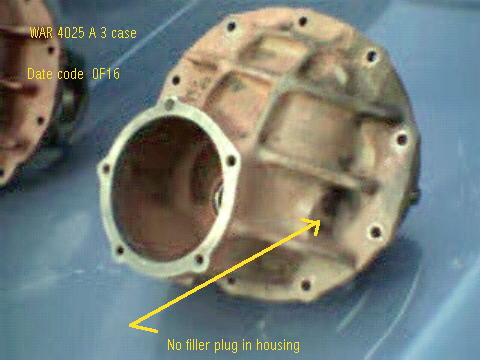
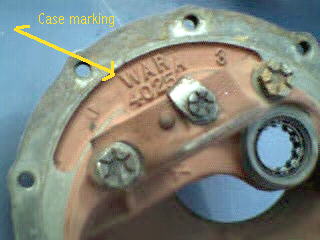
The N Case vs WAR Case
Standard or WAR cases, were cast in gray cast iron which has a grain structure that does not have the best shear strength characteristics. The N stands for nodular iron, which is made by adding magnesium to molten iron. What this does is change the grain structure from flakes to nodules – much stronger and less likely to fail under shear load.
The case of course most desirable is the N case, first used on the 427 Galaxies around 64-65 I believe.They are most often found behind the later 428CJ and 429CJ cars.From what I have seen don’t expect to find them in 390 or 289 Hipo cars.The N cases went with 31 spline centers and are for rugged duty.And believe it or not, they were also used in some FE equipped Ford 1/2 ton 4X4 pickups!
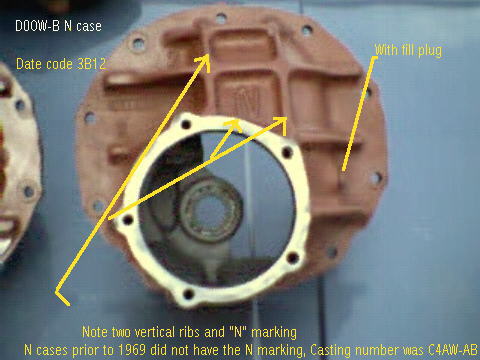
Some standard cases are also machined to take the larger 3.063” side bearings, most cases however (including N cases) will take the 2.892” side bearings. Aftermarket spools and cases are available that accommodate even larger bearings-3.250″ and 3.812″, but Ford used just the two sizes from what I have seen.The carrier I have seen with the 3.063″ larger side bearings is the C7AW-G marked single ribbed case, it came from a late 60’s Galaxie.
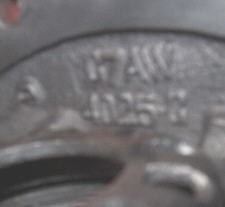
8″ information

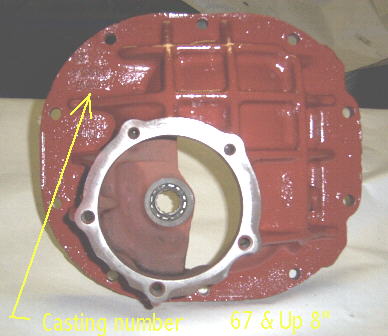
Visually Spotting the 9″ and 8″ Axle Housings
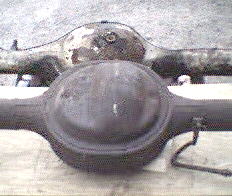
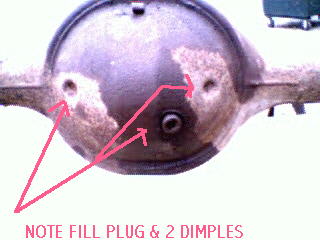
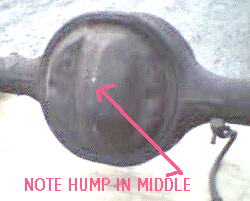
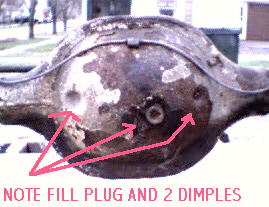


Axle Shafts
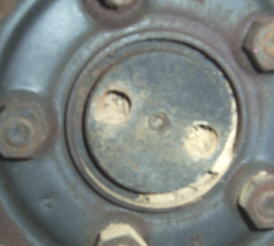
Ford used either 28 spline or 31 spline axle shafts with the nine inch, the eight inch came only in 28 spline, as did the majority of nine inch car applications.For the most part eight inch and nine inch car axle shafts will interchange between housings of the same width,spline count and bearing size (ie. 8″ 67 Mustang 28 spline axle shafts will work in 9″ 67 Mustang housing, etc.).A method to identify 28 spline axle shafts can be by looking at the center brake hub area, a rectangular slot in the center will indicate 28 spline axles.The 31 spline axle shafts will have a different appearance, with one small center chamfer and two outer holes in the center hub, however, 28 spline shafts can also appear like this to, so it does not always indicate 31 spline shafts (see photo below). Early axle shafts of the 28 spline variety cannot be shortened, due to either a reduced diameter between spline end and bearing end (early Mustangs,Fairlanes, Falcons etc.), or because of a tapered shaft which doesn’t allow for re-splining (early full size).It appears starting around 1967 the 28 spline shafts became more solid and the shaft diameter increased along the entire length, so shortening is possible and they can be be resplined to their original 28 count.Most 31 spline shafts can be shortened and resplined with no problems.

Rear Axle Tags
Rear axle tags if present on your housing can aid in identifying what is behind your center for gears,splines etc.Ford has changed the tag over the years, but generally the appliction number-which begins with the W on line one, the gear ratio and date code are always given.Tags are generally found attached to the passenger side of carrier assembly secured by one of the nuts on the housing studs.Here are some examples I have:
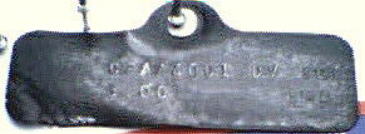

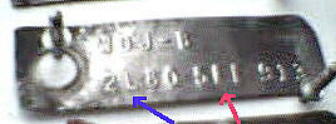
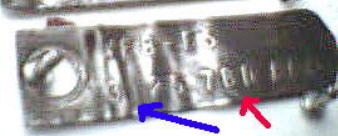
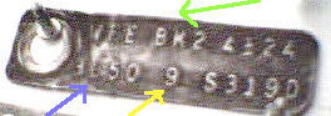
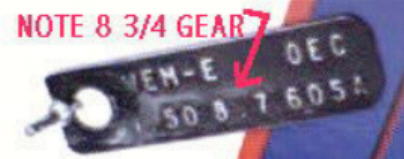
How to identify a Posi
The two basic types of “posi” units (posi is the G.M. name for its positive traction system which has been become a part of the nomenclature) are the early Equa lock and the subsequent Traction lock units ( I will refer to them here as “spools” to simplify things). I am not exactly sure when the Equa-locs first appeared, early units are scarce – I haven’t seen many prior to 1964/65 and these are quite rare.From what I have seen the Equa locs were used up until 1969, which is when I believe the Traction Loc units first appeared. There are visual and internal differences between the two spools and most parts do not interchange.
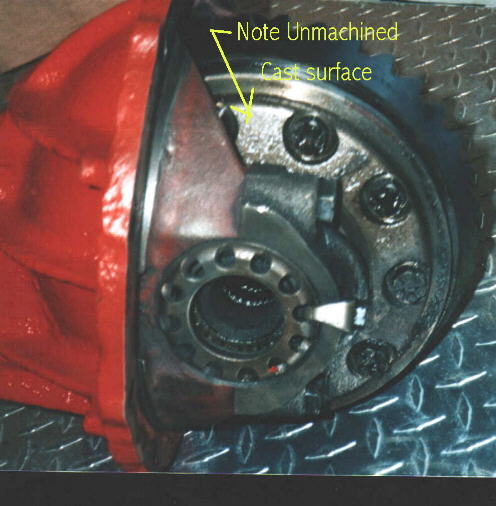
Internally the number of clutch disc and plates differs between the equa loc and trac loc spools, the equa loc having only 3 fiber plates and 4 steel with one large belveder spring applying force.The trac loc unit utilizes 4 fiber plates and 5 steel plates, with 4 smaller springs applying force.Both equa lock and trac loc units were available in 2 pin and 4 pin varieties, in either 28 spline or 31 spline versions.The four pin 31 spline unit would be more commonly found as a trac loc piece. The four pin being the heavier duty unit utilizing 4 spider gears vs just two in the two pin variety (as noted in figure above a four pin variety will have actually just 3 pins and a two pin will in reality just have 1 pin- the number of spider gears is actually what is being referred to).Shown below are the internals of a four pin equa loc, note the five “fingers” on the steel clutch plates-the tiny circular tabs on outer edge- (trac loc units will have only 4).

The Traction Loc
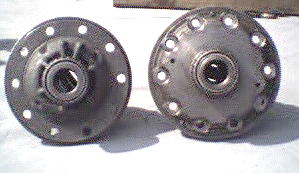
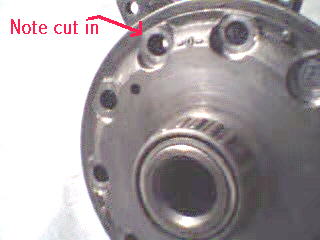
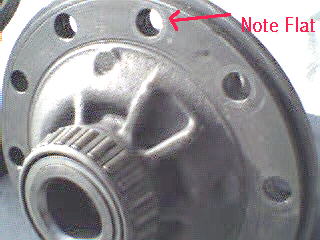

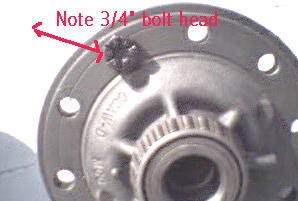

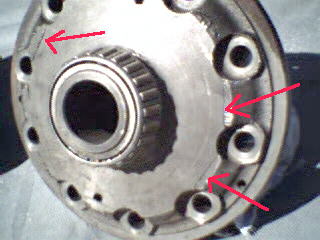
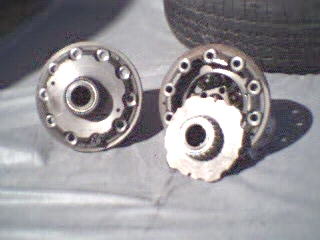
Gears, Yokes etc.
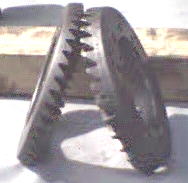

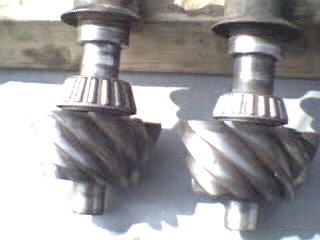

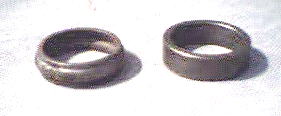
No guarantee as to the accuracy of this data.
| Year & Model | Axle Length | Notes |
| 1965-1966 Mustang | 57.25 inches | |
| 1967-1970 Mustang | 59.25 inches | |
| 1971-1973 Mustang | 61.25 inches | |
| 1977-1981 Versailles | 58.50 inches | |
| 1967-1973 Mustang, Torino, Ranchero, Fairlane | 59.25 inches to 61.25 inches | |
| 1957-1959 Ranchero and station wagon | 57.25 inches | |
| 1966-1977 Bronco | 58 inches | |
| 1977-1981 Granada/Versailles | 58 inches | |
| 1967-1971 Comet, Cougar, Mustang, Fairlane | 59.25 inches | |
| 1971-1973 Mustang | 61.25 inches | |
| 1964 Falcon | 58 inches | |
| 1967 Cougar | 60 inches | |
| 1967 Fairlane | 63.50 inches | coil springs |
| 1972 Ford Van 3/4 ton | 68 inches | |
| 1973-1986 Ford Van 3/4 ton | 65.25 inches | |
| 1957-1959 Ranchero and station wagon | 57.25 inches | narrowest 9″ housing |
| 1966-1977 Bronco | 58 inches | 5-on-5 1/2 inch diameter bolt circle |
| 1967-1973 Torinos, Rancheros, Fairlanes | 59.25 inches or 61.25 inches | |
| 1967-1971 Comets, Cougars, Fairlanes | 59.25 inches | |
| 1975 Mustang II 8″ | 57.00 inches | |
| 1974 Maverick 8″ | 56.50 inches |
Where To Find The Nine Inch Rear Axle
1967-1973 medium and big block Mustangs and Cougars 1966-1971 Fairlanes, Torinos, Montegos, Comets, and other Ford intermediates with big blocks.
1957-1959 V8 Fords and Mercurys
1977-1981 Lincoln Versailles & Trucks
Types Of Nine Inch Axle Housings
1967-1973 Mustang/Cougar – light duty, thinnest housing material, small axle bearings, 28 and 31 splines.
1957-1968 passenger car and 1/2 ton truck – medium duty, stronger than Mustang type, 28 and 31 splines.
Ranchero/Torino – heavy duty thick wall housing, 3.25 inch diameter axle tubes with flat tops.
1969-1977 Galaxies (coils), Lincolns (coils), and late pickups (leaf)- 3.25 inch diameter all the way to the backing plate, coil housings have upper control arm mount
How To Recognize Nine Inch Housing Centers
1957 – no dimples, flat center band up the center of the rear cover, bottom drain plug.
1958-1959 – two dimples on back of housing, flat center band, some had drain holes.
1960-1967 – two dimples, flat center band, oil level hole in back cover.
1963-1977 Lincoln, LTD, Thunderbirds had 9.375 inch centers, housings were cut away at the gasket surface for ring gear clearance, one curved rib at the front top portion of differential, strong but no gears.
Tip On Shortening Nine Inch Axles
1972 and earlier 31 spline axles have the ability to be shortened.
28 spline axles are tapered and cannot be shortened and re-splined.
1973 and later cars have a 5-on-5 bolt circle and the axles cannot be shortened.
1967-1973 Mustang axles can be identified by wheel flange:
Oval hole = 28 splines.
Two large holes and counter-sunk center = 31 splines.

